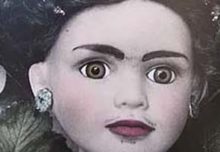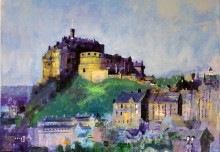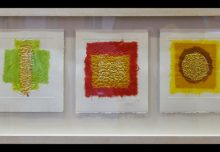…. LOCUS OF CONTROL …
‘Locus of control is the degree to which people believe that they, as opposed to external forces, have control over the outcome of events in their lives. The concept was developed by Julian B. Rotter in 1954, and has since become an aspect of personality studies.’ [Wikipedia]
A long time ago I qualified at Art College and got a degree in Design and Fine Art. My ambition was to make a living in art. I had to understand what makes my creativity have any effect, as well as just enjoying making it for myself. So later I joined the Open University to find out. While studying psychology I came across the concept of ‘Locus of Control’.
EXTERNAL
Anybody with an ‘external locus of control’ thinks that outside circumstances or forces are to be thanked or blamed. An artist who only uses an established art gallery to show and sell their work is likely to be using his or her ‘external locus of control’. If they do not sell very well at an exhibition they might blame the staff, or the type of looker, or fashion, or the weather, or the hanging system, or the pricing, or the publicity, or something else.
I say blame rather than think or analyze because any of those reasons might be valid. And you should have accepted that these problems occur and done something about them. Probably by not expecting someone else to do your job for you.
INTERNAL
With an ‘internal locus of control’ we operate knowing that any success or failure is down to ourselves. My internal locus meant that if I wanted to make a living as an artist it was going to be down to me.
If people liked or disliked anything that I made then it was to my credit, or my fault, not theirs.
This way of looking at behavior was also valuable when I realized that it showed me what influenced my business behavior.
The good news is that if an artist does it right then they can succeed. You yourself are in charge. Outside forces can influence but do not determine success. And, if any artist who really wants to make a living at it, fails, then it is their own fault.
So it is possible, and I have made my living as a full-time professional artist since 1965. This is how.
HOW
Divide your tasks into five equally crucial sectors.
One. Make your art product.
Two. Market and sell your art.
Three. Administer yourself as a business, keep records and manage accounts.
Four. Social networking, grouping, and website.
Five. Research and development.
Treat each of these five parts of your art business as equally important. Get efficient in all five sectors. The weakest of part of the business is the determining success factor, and not the strongest part. You are in charge.
I could write a book about this. Oh Yes! I already have.
****************************************
[For non-UK readers the OU, or Open University, is a computer-based University for grown ups wishing to return to high education later in their lives. The courses start at a lower level and gradually get harder. They are either a half credit, or a full credit, and usually take one year each. The student gradually adds more passes until they have sufficient to add up to a degree. It took me a few years from start to finish to get my BSc Hons. Imagine, I am an artist with a science degree! I am surprised as well.]





